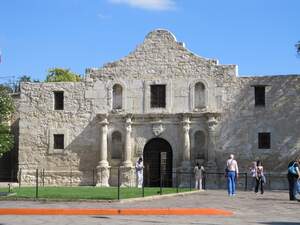

National Frozen Food Day
Observed
annually on March 6th (since 1984)
Dates
Founded by
President Ronald Reagan on March 6th, 1984
Tags
Food & Drink
Hashtags
Sources
https://www.congress.gov/bill/98th-congress/senate-joint-resolution/193
https://www.eatright.org/food/planning/smart-shopping/frozen-foods-convenient-and-nutritious
https://www.fsis.usda.gov/food-safety/safe-food-handling-and-preparation/food-safety-basics/freezing-and-food-safety
https://www.holidayinsights.com/moreholidays/March/frozenfoodday.htm
https://www.loc.gov/everyday-mysteries/technology/item/who-invented-frozen-food/
https://www.anrdoezrs.net/links/100298379/type/dlg/https://www.newspapers.com/image/502807290/
https://www.presidency.ucsb.edu/documents/proclamation-5157-frozen-food-day-1984
National Frozen Food Day was created In March 1984 in celebration of the fifty-fourth anniversary of the frozen food industry. It came into being with the passing of Senate Joint Resolution 193 and its signing by President Ronald Reagan to create Public Law 98-226. The law says in part:
Now, therefore, be it Resolved by the Senate and House of Representatives of the United States of America in Congress assembled, That in recognition of the significant contribution which the frozen food industry in the United States has made and continues to make to the nutritional well-being of the American people by enabling them to share in the agricultural abundance of the Nation, March 6, 1984, is hereby designated as "Frozen Food Day". The President is authorized and requested to issue a proclamation calling upon the people of the United States to observe such day with appropriate ceremonies and activities.
In accordance, President Ronald Reagan issued Proclamation 5157, and in a similar fashion it says:
In recognition of the significant contribution which the frozen food industry has made to the nutritional well-being of the American people, the Congress, by Senate Joint Resolution 193, has designated March 6, 1984, as "Frozen Food Day" and authorized and requested the President to issue a proclamation upon this occasion.
Now, Therefore, I Ronald Reagan, President of the United States of America, do hereby proclaim March 6, 1984, as Frozen Food Day, and I call upon the American people to observe such day with appropriate ceremonies and activities.
The legislation and proclamation officially designated National Frozen Food Day for the year, but the holiday eventually began being observed informally every year, starting around 2001. It takes place during National Frozen Food Month.
Clarence Birdseye is considered the father of frozen foods. He came up with the idea of freezing foods while working in Labrador, Canada, between 1912 and 1915. Fish he caught with the native Inuit froze naturally in subzero temperatures, and he learned they were still fresh when they thawed months later. He theorized that food must be frozen quickly to retain the highest quality of flavor and texture.
Birdseye worked for 10 years to discover how to repeat the process artificially, eventually developing two methods for quick-freezing food. With the first, packaged food was held between two metal belts that were chilled to between -40°F and -45°F with a solution of calcium chloride. With the second—the more popular technique—packaged food was held between two hollow metal plates chilled at -25°F by the evaporation of ammonia. This could freeze a package of meat two inches thick to 0°F in about 90 minutes and fruits and vegetables in about 30 minutes. Birdseye was credited with inventing the quick-freezing method in 1924.
Frozen vegetables, fruit, meat, and fish were first packaged and offered to consumers in the United States in 1930 after 26 frozen food items were displayed for test marketing in Massachusetts. Frozen foods then became available on a large scale between 1935 and 1940. The foods responded to the needs of consumers, who were moving from rural to urban areas in large numbers, and thus to places where a great quantity of food was needed but there wasn't a place to grow it. Frozen foods also made it possible so that seasonal foods were no longer considered as such. During World War II, foods had ration point values, which drew the attention of consumers even more to frozen foods. Following the war, frozen food sales became an even more important part of retail food selling. It didn't take long before frozen foods made it to space, being taken aboard Apollo 12 and on Skylab.
Over the years, America's frozen food industry has continued to work closely with producers and continued in research and development to find better ways to bring nutrition, quality, and taste of agricultural products to consumers. Frozen foods may aid in reducing food waste, may be more affordable than fresh foods, and may be beneficial for those with limited kitchen space and utensils. Frozen foods are an affordable and easy way to get the daily recommended fruits and vegetables. Fruits and vegetables that are frozen are generally picked at peak ripeness, and their nutrients, vitamins, minerals, and flavors are frozen in them. To get the health benefits from fruits, vegetables, and other frozen foods, nutrition facts labels should be checked and foods with added sauces should be avoided.
Almost all foods can be frozen, except for eggs in shells and canned food. Not all foods freeze well, however, including lettuce, cream sauce, and mayonnaise. Raw meats keep better in the freezer than cooked meats, because they have more moisture which is otherwise lost during cooking. Food kept at 0°F or lower will remain safe, and freezing food prevents the growth of microorganisms that cause foodborne illness and food spoilage, although food quality degrades the longer it is frozen. For these many reasons frozen food can be celebrated, and that is what is done today on National Frozen Food Day!
How to Observe National Frozen Food Day
- Package your own freezer meals.
- Pick up some frozen foods to stock your freezer with and to eat. Get yourself some TV dinners, frozen pizza, frozen yogurt, frozen custard, frozen snacks, or meat like beef, chicken, or fish.
- Buy a new freezer.
- Check out what's happening with the National Frozen & Refrigerated Foods Association (NFRA).
- Read a book such as Frozen in Time: Clarence Birdseye's Outrageous Idea About Frozen Food, Birdseye: The Adventures of a Curious Man, or Grocery: The Buying and Selling of Food in America.





















